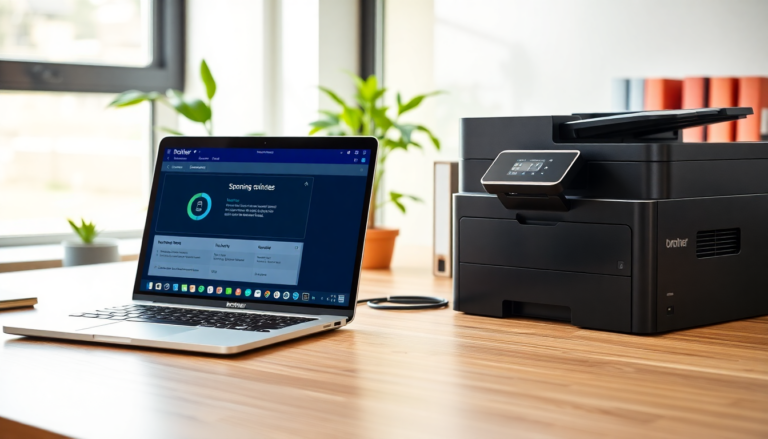Argomenti trattati
Have you ever considered how secure your printer really is? The recent discovery of serious vulnerabilities in several Brother printers should make every user rethink their default security settings. Security researchers at Rapid7 have identified multiple flaws that not only threaten the devices themselves but also compromise the entire network they connect to. With the potential for unauthorized access and exploitation, understanding these vulnerabilities is key to keeping your devices safe.
Unpacking the Vulnerabilities
According to Rapid7, a staggering 689 models of Brother printers, along with certain models from Fujifilm, Toshiba, and Konica Minolta, are vulnerable to eight critical security flaws. Among these, CVE-2024-51978 stands out with a critical severity rating of 9.8. This particular vulnerability allows attackers to generate the default administrator password for the printers using their serial numbers, which can be easily accessed through another vulnerability, CVE-2024-51977. In simple terms, this means attackers could easily take control of the device and potentially jeopardize the entire network.
But it doesn’t stop there. These vulnerabilities also include risks like buffer overflow attacks and remote code execution. Such issues could lead to unauthorized access to sensitive information or even crash the devices, rendering them useless. The repercussions are significant, as these vulnerabilities could expose passwords for other network services, opening the door for further exploitation throughout the network.
Breaking Down the Specific Vulnerabilities
Let’s take a closer look at the key vulnerabilities identified:
| CVE | Description | CVSS Score |
|---|---|---|
| CVE-2024-51977 | Unauthenticated attacker can leak sensitive information. | 5.3 (Medium) |
| CVE-2024-51978 | Unauthenticated attacker can generate the device’s default administrator password. | 9.8 (Critical) |
| CVE-2024-51979 | Authenticated attacker can trigger a stack-based buffer overflow. | 7.2 (High) |
| CVE-2024-51980 | Unauthenticated attacker can force the device to open a TCP connection. | 7.5 (High) |
| CVE-2024-51981 | Unauthenticated attacker can force the device to perform an arbitrary HTTP request. | 7.5 (High) |
| CVE-2024-51982 | Unauthenticated attacker can crash the device. | 7.5 (High) |
| CVE-2024-51983 | Authenticated attacker can disclose the password of a configured external service. | 6.8 (Medium) |
The most alarming vulnerability, CVE-2024-51978, is built into the manufacturing process of the printers, meaning it can’t be fixed with a simple firmware update. Brother has acknowledged this issue and is urging customers to change their default passwords and update their firmware where applicable to address the other vulnerabilities.
What You Should Do
For anyone using Brother printers, the message is crystal clear: change your default passwords right away. This straightforward yet powerful step can significantly lower the risk of unauthorized access. While many tech-savvy users understand the importance of securing network-connected devices, it’s vital to share this knowledge with less experienced users who might overlook these vulnerabilities.
Moreover, keeping your firmware up to date is crucial to guard against other possible security flaws. Regularly reviewing your security settings and ensuring your devices are correctly configured can also go a long way in protecting against future threats.
As these vulnerabilities highlight the pressing need for security in our increasingly connected world, users must stay alert and proactive about their device security. Ignoring these recommendations could lead to serious consequences, including financial losses and compromised network integrity. Are you ready to take action?

